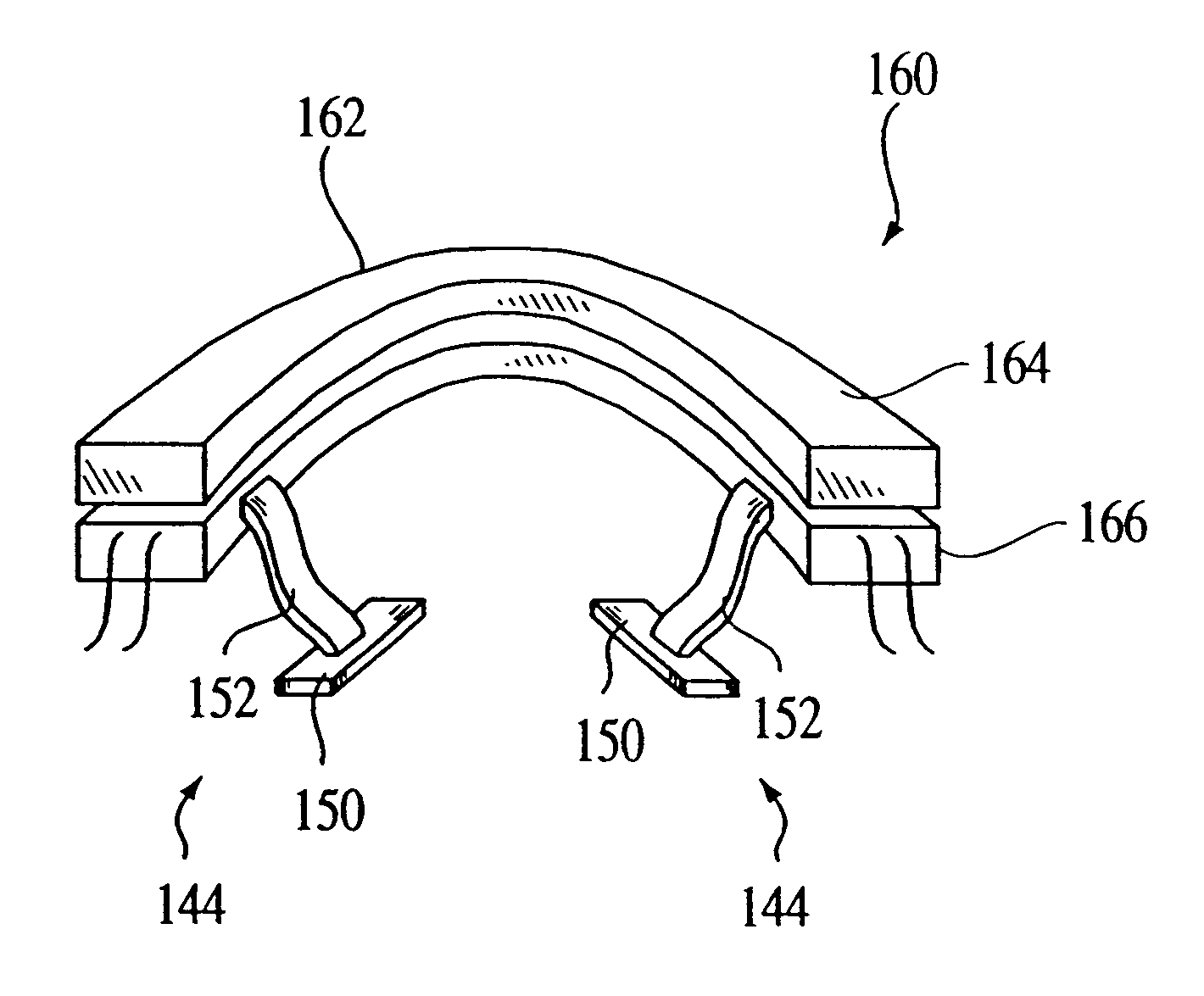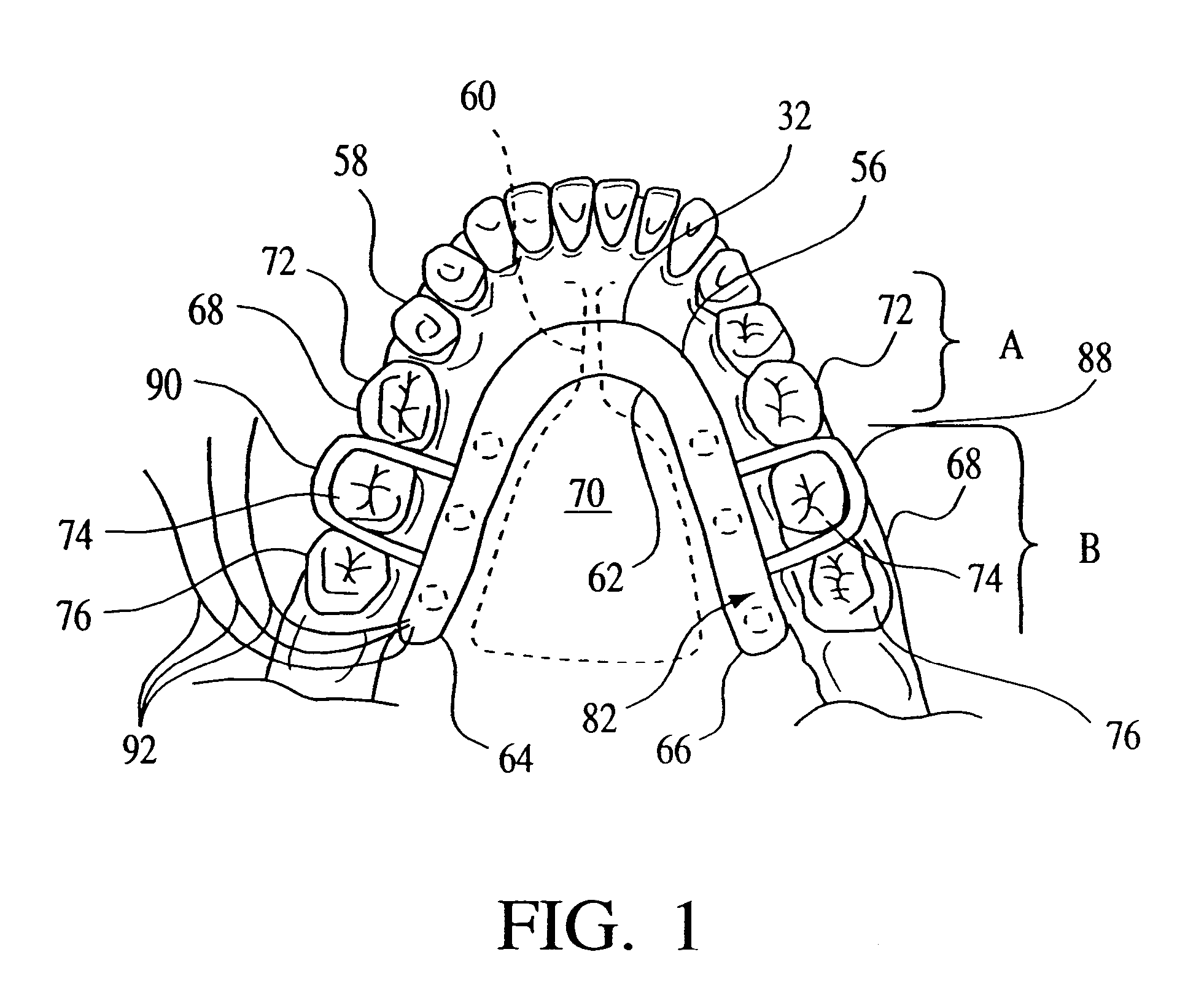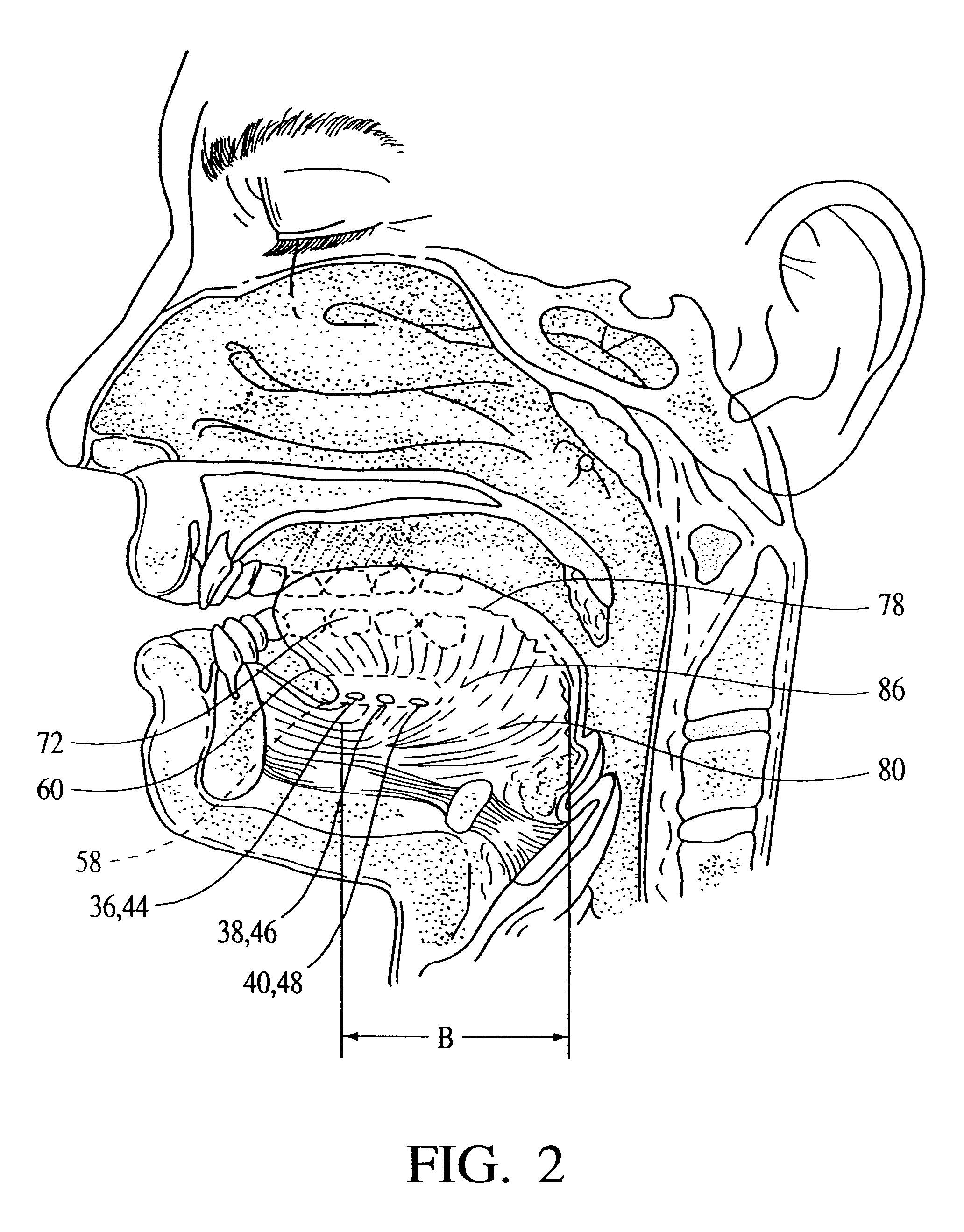Intraoral electromuscular stimulating device and method
a stimulation device and electromuscular technology, applied in the field of intraoral electromuscular stimulation device and method, can solve the problems of fragmented sleep, complete or nearly complete cessation of sleep, severe degrees of oxyhemoglobin desaturation,
- Summary
- Abstract
- Description
- Claims
- Application Information
AI Technical Summary
Benefits of technology
Problems solved by technology
Method used
Image
Examples
Embodiment Construction
Referring now to FIGS. 1-3 there is shown therein a first embodiment of an electromuscular stimulating system 30 of the present invention for providing sublingual electromuscular stimulation to a patient to reduce or minimize the occurrence of a breathing disorder, such as OSA. As best illustrated schematically in FIG. 3, electromuscular stimulating system 30 includes a dental appliance 32 on which are provided a first group 34 of electrodes 36, 38 and 40 and a second group 42 of electrodes 44, 46 and 48. During normal use, dental appliance 32 is located under the patient's tongue so that the electrodes are in contact with the patient at sublingual locations generally proximate to the sublingual musculature to provide electrical stimulation to the muscles of the upper airway responsible for maintaining the patency of the airway. Electromuscular stimulating system 30 includes a control unit 50 that controls the application of stimulation pulses to the electrodes, a power supply 52 fo...
PUM
 Login to View More
Login to View More Abstract
Description
Claims
Application Information
 Login to View More
Login to View More - R&D
- Intellectual Property
- Life Sciences
- Materials
- Tech Scout
- Unparalleled Data Quality
- Higher Quality Content
- 60% Fewer Hallucinations
Browse by: Latest US Patents, China's latest patents, Technical Efficacy Thesaurus, Application Domain, Technology Topic, Popular Technical Reports.
© 2025 PatSnap. All rights reserved.Legal|Privacy policy|Modern Slavery Act Transparency Statement|Sitemap|About US| Contact US: help@patsnap.com



